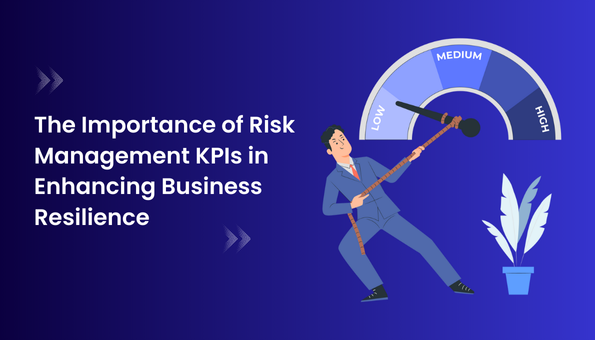The Crucial Relevance of Risk Management in Getting Business Objectives
In the rapidly advancing business landscape, the capacity to navigate unpredictability has actually become an essential. This is where Risk Management action in, giving a structured method to recognizing, evaluating, and mitigating prospective obstacles to progress. It's greater than just a protective procedure - it's a strategic device, fostering durability and development. As we check out the essential function of Risk Management in achieving organizational objectives, one can't wonder yet aid: just how does this convert into real-world success?
Recognizing the Idea of Risk Management in Company
The Essential Function of Risk Management in Strategic Planning
Incorporating Risk Management into tactical planning acts as a safeguard for organizations, securing their long-term strategies with a strong structure of preparedness and durability. It operates as the company's radar, finding possible risks and susceptabilities that can interfere with the path towards accomplishing their mentioned purposes. Risk Management uses a structure for anticipating uncertainties and devising ideal reactions, making certain the company's survival and success even despite difficulty. By incorporating Risk Management into tactical planning, organizations can transform these unpredictabilities right into possibilities for growth and development. This tactical interweaving of Risk Management cultivates adaptability, making organizations a lot more durable and enabling them to browse the ever-changing organization landscape confidently. Risk Management becomes an essential tool in strategic planning, important in protecting lasting success.

Techniques for Identifying, Assessing, and Prioritizing Risks
Browsing the facility landscape of threats requires the application of specific methods for their prioritization, recognition, and assessment. The process starts with Risk recognition, employing devices such as SWOT analysis, which helps in identifying potential dangers and opportunities. Next, Risk evaluation is conducted to establish the prospective impact and chance of each Risk. Tools such as Risk matrices and impact-probability charts are utilized for this. Threats are prioritized based on their prospective effect and chance, permitting organizations to focus their sources on critical threats. This systematic technique guarantees an extensive understanding of the Risk Discover More landscape, making it possible for companies to make informed decisions and successfully take care of threats to accomplish their goals - importance of risk management.
Protecting Business Procedures Through Reliable Risk Management
In the business landscape filled with uncertainties, effective Risk Management plays a crucial function in guarding organizational operations. By determining and assessing potential hazards, Risk Management enables companies to establish durable backup plans. Web Site Organizations should spend in extensive Risk Management methods to safeguard their procedures.

Transforming Possible Dangers to Opportunities: The Power of Risk Management
While potential dangers may initially show up as obstructions to organizational success, reliable Risk Management can change them right into possibilities. A proactive technique to risk Management entails recognizing, assessing, and focusing on risks to create strategies that turn them right into prospective advantages. This procedure requires the advancement of a risk-aware society within the organization, encouraging individuals click for source to view threats as potential drivers for modification and development, rather than simple risks. importance of risk management. With this lens, prospective risks end up being chances to innovate, boost procedures, and enhance resilience. Thus, by leveraging the power of Risk Management, organizations can not only protect their procedures however likewise stimulate development and accomplish their goals in an unpredictable service setting.
Case Studies: Success Stories of Risk Management Driving Organization Objectives
Successful implementation of Risk Management strategies has generated outstanding results in different services, highlighting the qualities of this strategy. Multinational firms like Microsoft and Google, for circumstances, have leveraged Risk Management to minimize hazards and make use of chances, driving their service purposes onward. These examples illustrate exactly how successful Risk Management can not just steer businesses clear of prospective challenges however likewise guide them towards their tactical objectives.
Conclusion
In conclusion, Risk Management is fundamentally critical in attaining organizational objectives. It provides a systematic approach to determining, examining, and dealing with potential hazards and chances. More than simply mitigating dangers, it likewise promotes innovation, strength, and lasting development. By incorporating Risk Management right into calculated preparation, companies can much better browse uncertainties, secure operations, and capitalise on chances, consequently straightening with lasting goals.
At its core, Risk Management is the procedure of determining, evaluating, and resolving prospective threats that can adversely influence a company's procedures or purposes. Next, Risk evaluation is carried out to identify the possible impact and possibility of each Risk. Risks are prioritized based on their possible effect and possibility, allowing organizations to focus their sources on high-priority risks. By recognizing and analyzing possible hazards, Risk Management enables organizations to establish durable backup plans. An aggressive approach to run the risk of Management involves recognizing, examining, and focusing on risks to design strategies that transform them into prospective advantages.
 Jenna Jameson Then & Now!
Jenna Jameson Then & Now! Danielle Fishel Then & Now!
Danielle Fishel Then & Now! Earvin Johnson III Then & Now!
Earvin Johnson III Then & Now! Marcus Jordan Then & Now!
Marcus Jordan Then & Now! Stephen Hawking Then & Now!
Stephen Hawking Then & Now!